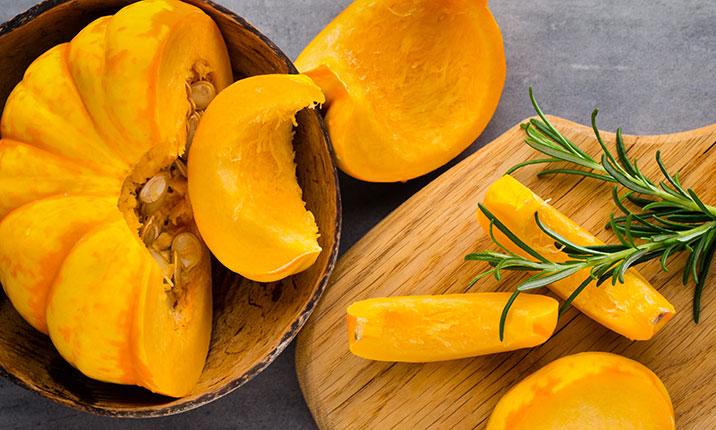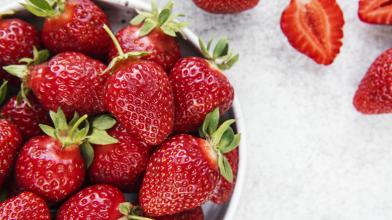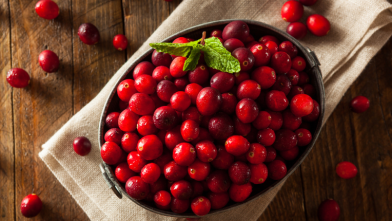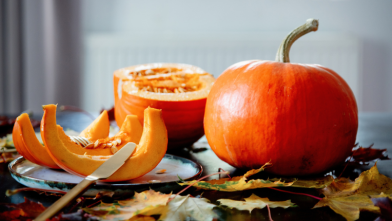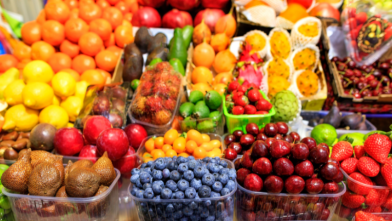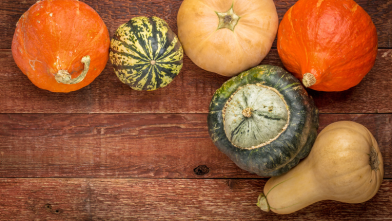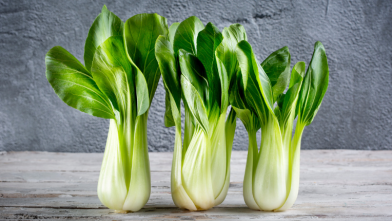Making Your Own Puree
Pumpkin puree is quite versatile. You can buy it canned, usually in the baking aisle, or you can make your own:
- Use a sugar pumpkin (also called pie pumpkins)
- Cut in half
- Remove the seeds
- Rub with oil
- Bake for 45 minutes at 350 degrees F, or until the flesh easily pierces with a fork
- Scoop out with a spoon, add to a blender along with a splash of water, and puree until smooth
When selecting fresh pumpkin, choose a pumpkin that’s uniform in color with no soft spots. It should be heavy for its size and have its stem intact. Fresh, whole pumpkin will last for weeks at room temperature, or for months in the fridge.
Adding Pumpkin for Nutrients
Create delicious seasonal pancakes and waffles by adding pumpkin puree to batter or add pureed pumpkin to baked goods to increase the fiber and nutrient content of muffins and bread. Add a cup of puree to your favorite pasta sauce like alfredo, or to chili and soups. You can also sauté roasted pumpkin (after scooping it out of the rind) along with veggies and a protein for a quick stir-fry.
Adding pumpkin puree to various dishes not only adds flavor and color, but nutrition, too. One half-cup serving of pureed pumpkin has three grams of fiber and 250% of the daily value of vitamin A. Fiber helps to regulate bowel movements, lowers cholesterol, and helps control blood glucose (blood sugar) levels. In those with diabetes, fiber can slow the absorption of sugar into the body and improve blood glucose levels. Eating pumpkin regularly can help you reach your daily fiber goals. Men need 30–38 grams of fiber per day, and women need 21–30 grams. Vitamin A helps our bodies fight off infection and boosts our immune system and is critical for healthy vision. Vitamin A also helps maintain the health of the heart, lungs, and kidneys.
Don’t forget about pumpkin seeds! You can buy raw or roasted lightly salted pumpkin seeds at the store (be sure to buy them already shelled). They’re high in fiber and heart-healthy fats and taste delicious on their own as a snack or added to soups and salads.
Pumpkin Recipes
Be sure to check out the following recipes which highlight how to use pumpkin puree in various ways! First, delicious crab, kale, and ricotta stuffed lasagna rolls smothered in a cheesy pumpkin Parmesan sauce. The next time you make mashed potatoes, try adding a scoop of pumpkin puree for an added fiber boost. If you’ve got a little more time on your hands, a vegetable packed shrimp pumpkin curry that will warm you up in the winter months.
